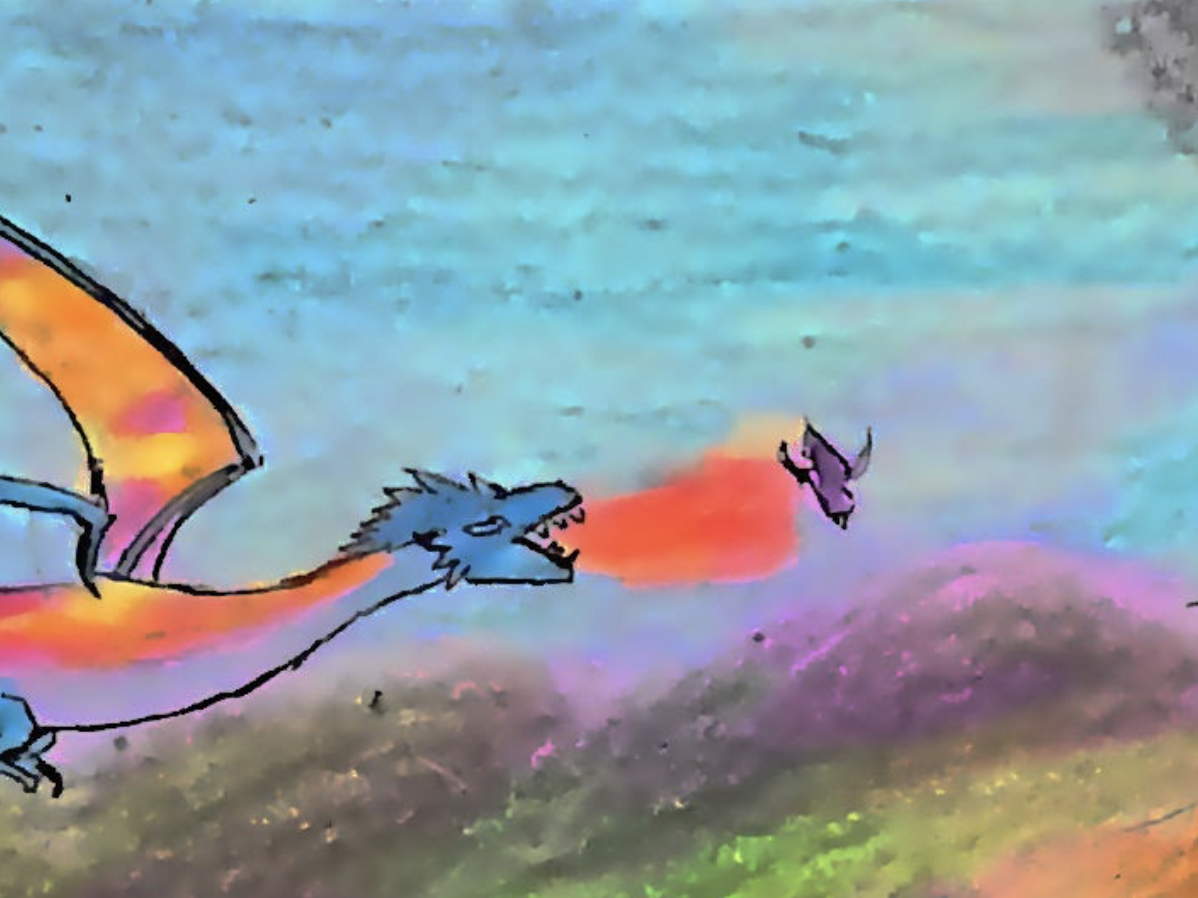Large animals have trouble flying. How would a dragon pull it off?
Today, we’re asking the question: could dragons exist? Across multiple articles, we’ll be looking at potential ways dragons could have emerged in the real world. We’ll start with dragon aerodynamics. Could dragons fly?
You see, whether or not a winged animal can fly depends on its weight, its body shape, its wing shape, its total wing area, and how much power its muscles can output. Fictional dragons can be mind-bogglingly colossal, but as you’d imagine, real-life creatures can only get so big before they’re permanently grounded. We can use what science tells us about real flying animals to determine what anatomical features would allow a dragon to fly here on Earth and how big it could be.
Unlike other Snipette pieces, this one involves quite a bit of math. If you want to skip those, feel free to use the "math-free" toggle below:
This is the first of a five-part series on the evolution and biology of (hypothetical) dragons. Each part is a self-contained unit, so you could either read them all or simply dive in where you like.
Before we begin, we may need to change our definitions a bit. Dragons are traditionally depicted with two wings and four legs. Movies and TV shows, on the other hand, often show them with two wings and two legs.
In actuality, these two-legged creatures should be called wyverns. The term comes from a word meaning “snake” and is related to the Latin vipera, or viper. (If you’ve ever heard people refer to dragons as “worms”, this is where that came from). Even so, the body shape of two-legged wyverns seems more realistic than four-legged dragons. It matches the way we know birds, bats, and pterosaurs evolved.
I’m going to use the wyvern’s body shape for our hypothetical dragons, because it has biological backing, and it minimizes the weight they’d need to carry while flying. (Trust me — when it comes to taking off, these guys are going to need all the help they can get).
While dragons never roamed the skies, other giant reptiles did: pterosaurs. Among the largest pterosaurs was Quetzalcoatlus northopi, which was roughly the size of a giraffe(neck included) and weighed as much as a grizzly bear. Given such a big load, it’s hard to imagine this giant ever taking to the skies.
However, palaeontologists and aeronautics experts looked at Quetzalcoatlus’ fossils and found some very clever adaptations. Like birds, they had hollow bones which helped them take in more oxygen for respiration. Specifically, these pterosaurs had air sacs in their bones that helped them store more oxygen for powering flight than their lungs could alone. Despite being hollow, these bones were still wide enough to support Quetzalcoatlus’ weight.
Interestingly, flying creatures have to deal with a similar issue as rockets when it comes to taking off: increasing their flying power while minimally increasing their weight. They can use strong and heavy wing muscles to stay airborne, but they also need to push themselves off the ground to get airborne. Therefore they need strong and heavy leg muscles to launch themselves and their heavy wing muscles into the air. However, those strong and heavy leg muscles would be adding even more to their weight, requiring even stronger and heavier flight muscles to keep them aloft, and so on and so forth…
To break out of this loop, evolution conceived a creative solution. Instead of jumping off the ground with their legs like birds, pterosaurs launched off their wings like bats. They’d push off the ground with their forelimbs, start flapping, and take to the skies!
Thanks to its adaptations, we suspect Quetzalcoatlus reached speeds of 80 miles per hour(130 km/h) in the air and a cruising altitude of 2.8 miles(4.5 km). For comparison, a sprinting cheetah can reach a maximum of 75 mph(about 121 km/h), and 2.8 miles (4.5 km) is about half the height of Mount Everest. To top things off, Quetzalcoatlus could probably stay airborne for up to seven days at a time!
Thanks to its adaptations, Quetzalcoatlus could probably travel faster than a sprinting cheetah at half the height of Mount Everest and stay aloft for seven days at a time without landing!
So we already know of huge creatures that flew phenomenally. If our dragons had similar bones and wings, they could likely get to the same size and weight as these ancient pterosaurs. Quetzalcoatlus stood 18 feet(5.5 m) tall with a wingspan of 36 feet(11 m) — that’s a greater wingspan than an F-16 fighter jet. Although their proportions would be very different, that puts our hypothetical dragons on the same scale as most of the fliers from the How to Train Your Dragon films. They’d also be comparable in height to some of the smaller dragons from Harry Potter and Game of Thrones.
Before we proceed, there are a few caveats. Some palaeontologists suspect that Quetzalcoatlus and other giant pterosaurs flew mostly in their younger years to avoid predators and did so less and less as they matured. It’s possible the adults only flew short distances. What’s more, the atmosphere was probably more oxygen-rich in the Mesozoic era. That means animals could get more energy from their food and more power from their muscles. Dragons might need conditions like these to perform as well as Quetzalcoatlus.
Finally, our hypothetical dragons need more organs than the Quetzalcoatlus. Besides eating, thinking, flying, and all those run-of-the-mill tasks, dragons need organs for their true claim to fame: breathing fire.
What comes next? This is the first of a five-part series on the physics, chemistry, and biology of dragons. Watch out for the next instalment on Monday or read the full series.
